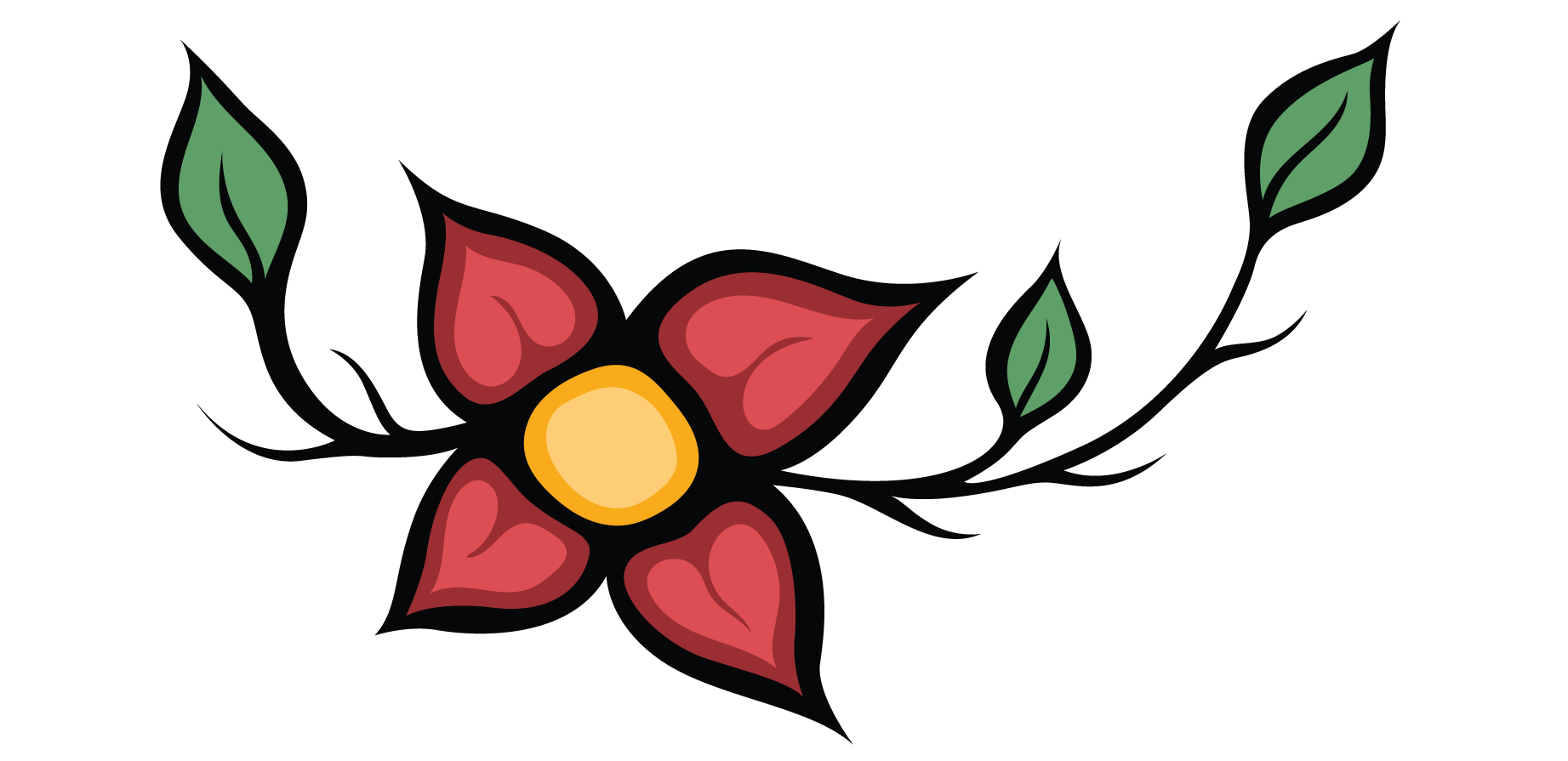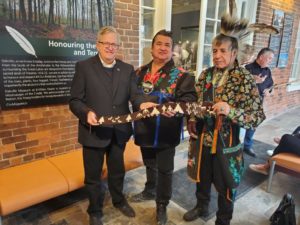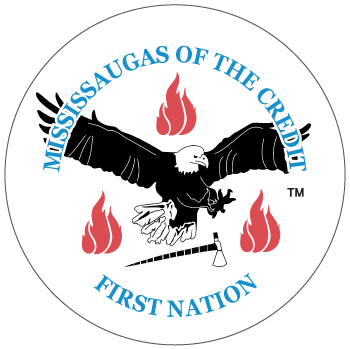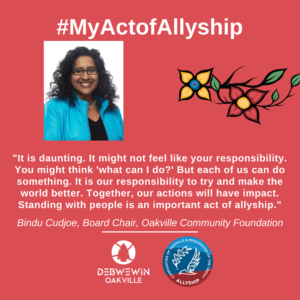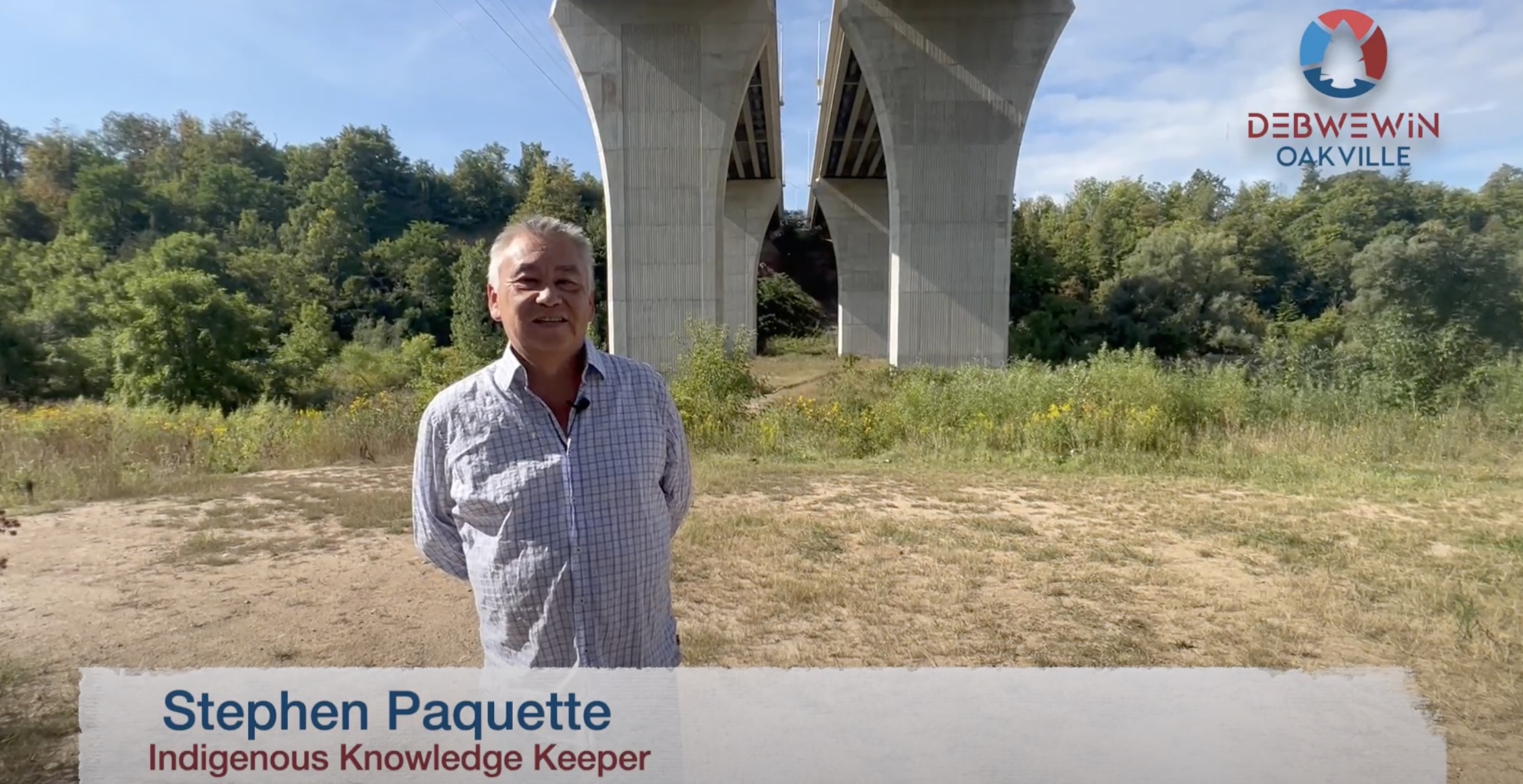
Grateful Treaty Person Toolkit Living* Glossary
* this is a living document as we continue to learn and understand, we will update the glossary accordingly.
Allyship
An ongoing process of learning where a member of a different group works to end a form of discrimination for a particular individual or designated group.
Anishinaabek/g
This is what Algonquin Speaking People like the Missisaugaus of the Credit refer to themselves. It roughty translate to “the Authentic People” or “Real People”. The Anishinaabeg (plural form of Anishinaabe) live from the Ottawa River Valley west across Northern Ontario and to the plains of Saskatchewan south to the northeast corner of North Dakota, northern Minnesota and Michigan, as well as the northern shores of Lakes Ontario and Erie. The Ojibwe, Chippewa, Odawa, Potawatomi, Algonquin, Saulteaux, Nipissing and Mississauga First Nations are Anishinaabeg. Some Oji-Cree First Nations and Métis also include themselves within this cultural-linguistic grouping.
Anishinaabemowin
The Anishinaabe language—is the original language spoken by the Anishinaabe people, and the second most commonly spoken First Nations language in Canada (after Cree).
Assimilation
The process in which individuals or groups of differing ethnic heritage are absorbed into the dominant culture of a society.
Colonialism
The policy or practice of acquiring full or partial control over another country, occupying it and exploiting it economically.
Decolonization
To free a people or area from colonial status; a long-term process involving the bureaucratic, cultural, linguistic and psychological divesting of colonial power.
Diversity
The acceptance and respect of various dimensions including race, gender, sexual orientation, ethnicity, socio-economic status, religious beliefs, age, physical abilities, political beliefs and other ideologies.
Equity
A condition or state of fair, inclusive and respectful treatment of all people. Equity does not mean treating people the same without regard for individual differences, but helping people achieve the same outcome by understanding and working with their differences.
First Nation
The term First Nations is colonial; it is always better to use the name the Nation's refers to itself like Anishinaabeg or Onkwehonwe. More information.
First Nation is one of three groupings of Indigenous people in Canada, the other two being Métis and Inuit. Unlike Métis and Inuit, most First Nations hold reserve lands, and members of a First Nation may live both on and off these reserves.
Haudenosaunee (Iroquois) Confederacy
“People of the longhouse,” are members of a confederacy of Indigenous nations known as the Haudenosaunee Confederacy or post contact as Iroquois Confederacy. Originally a confederacy of five nations inhabiting the northern part of New York state, the Haudenosaunee consisted of the Seneca, Cayuga, Oneida, Onondaga and Mohawk. When the Tuscarora joined the confederacy early in the 18th century, it became known as the Six Nations. Their traditional territories include areas around the Great Lakes.
Inclusion
The extent to which diverse members of a group feel valued and respected.
Indian Act
Passed into law in 1876, The Indian Act is the primary law the federal government uses to administer Indian status, local First Nations governments and the management of reserve land. It also outlines governmental obligations to First Nations peoples. The Indian Act pertains to people with Indian Status; it does not directly reference non-status First Nations people, the Métis or Inuit.The Act aimed to eliminate First Nations culture in favour of assimilation into Euro-Canadian society. trauma, human rights violations and social and cultural disruption for generations of Indigenous peoples.
Indigenous & Aboriginal
The terms Indigenous & Aboriginal are colonial; it is always better to use the Nation's name. Between the two names, Indigenous is the preferred term More information.
These colonial umbrella terms include First Nations, Inuit and Metis Peoples as well as international terms describing the original inhabitants of a country, prior to colonization. Indigneous is the preferred term as it is a relational word that highlights a Peoples' connection to traditional territories, as well as their experiences of colonization. The term Aboriginal was introduced in the 1982 Canadian Constitution by the Canadian government as an 'umbrella' term to include First Nations, Inuit and Métis.
Inuit & Inuk
The Inuit are the people of Canada’s Arctic North and also inhabit Alaska and Greenland. Inuk is a single person.
Métis
The Métis are a post-contact Indigenous People. Métis refers to people with roots in the Red River Community (Winnipeg Post-Confederacy Treaty 1 Area) or other historic Métis communities.
The Mississauga
Mississauga is a post-contact term for a group of Anishinaabeg people who lived north of the Great Lakes.
Mohawk
Mohawk is a post contact term people are the most easterly section of the Haudenosaunee, or Onkwehonwe and a member of the Iroquois Confederacy. They are an Iroquoian-speaking Indigenous people of North America, with communities in southeastern Canada and northern New York State, primarily around Lake Ontario and the St. Lawrence River
Onkwehonwe
In the Kahnyen’kehàka (Mohawk language) Onkwehonwe translates to ‘the original or first people’. The traditional way of the Onkwehonwe (people of the Six Nations, also called Haudenosaunee) is to live in harmony with Mother Earth.
Reciprocity
The practice of exchanging resources with others for mutual benefit, especially privileges granted by one country or organization to another.
Reconciliation
Reconciliation is usually described as an ongoing process through which Indigenous peoples and the Crown work cooperatively to establish and maintain a mutually respectful framework for living together, with a view to fostering strong, healthy, and sustainable Indigenous nations within a strong Canada. The Truth and Reconciliation Commission of Canada (TRC) defines reconciliation as an ongoing process of establishing and maintaining respectful relationships between Indigenous and Non-Indigneous Peoples.
Settler
People whose ancestors migrated to Canada and who still benefit from on-going colonialism. The terms “white settler” or “settler of colour” may be used to self-identify but does not apply to people who are descendants of slaves as they did not come to Turtle Island willingly.
Six Nations
Six Nations of the Grand River is the post contact name for both a reserve and a Haudenosaunee First Nation. The reserve, legally known as Six Nations Indian Reserve No. 40, is just over 182 km2, located along the Grand River in southwestern Ontario. Six Nations is home to the six individual nations that form the Hodinöhsö:ni’ Confederacy (Haudenosaunee). These nations are the Kanyen’kehaka (Mohawk), Onyota’a:ka (Oneida), Onöñda’gega’ (Onondaga), Gayogohono (Cayuga), Onöndowága’ (Seneca) and Skaru:reh (Tuscarora).
Systemic Racism
An interlocking and reciprocal relationship between the individual, institutional and structural levels which function as a system of racism. It manifests as discrimination in areas including, justice, employment, housing, health care, education and more.
Truth and Reconciliation Commission (TRC)
The Truth and Reconciliation Commission was active from 2008 to 2015 and facilitated reconciliation among former Residential School students, families and communities. The TRC published their report and calls to action, which can be read here.
Turtle Island
Originating from the Creation story of some Indigenous Peoples including the Anishinaabeg and Haudenosuanee, it is the name given to North America.
Wampum Belt
Wampum are white or purple tubular beads usually made from quahog shells. They are often woven into belts to symbolize agreements between nations.






